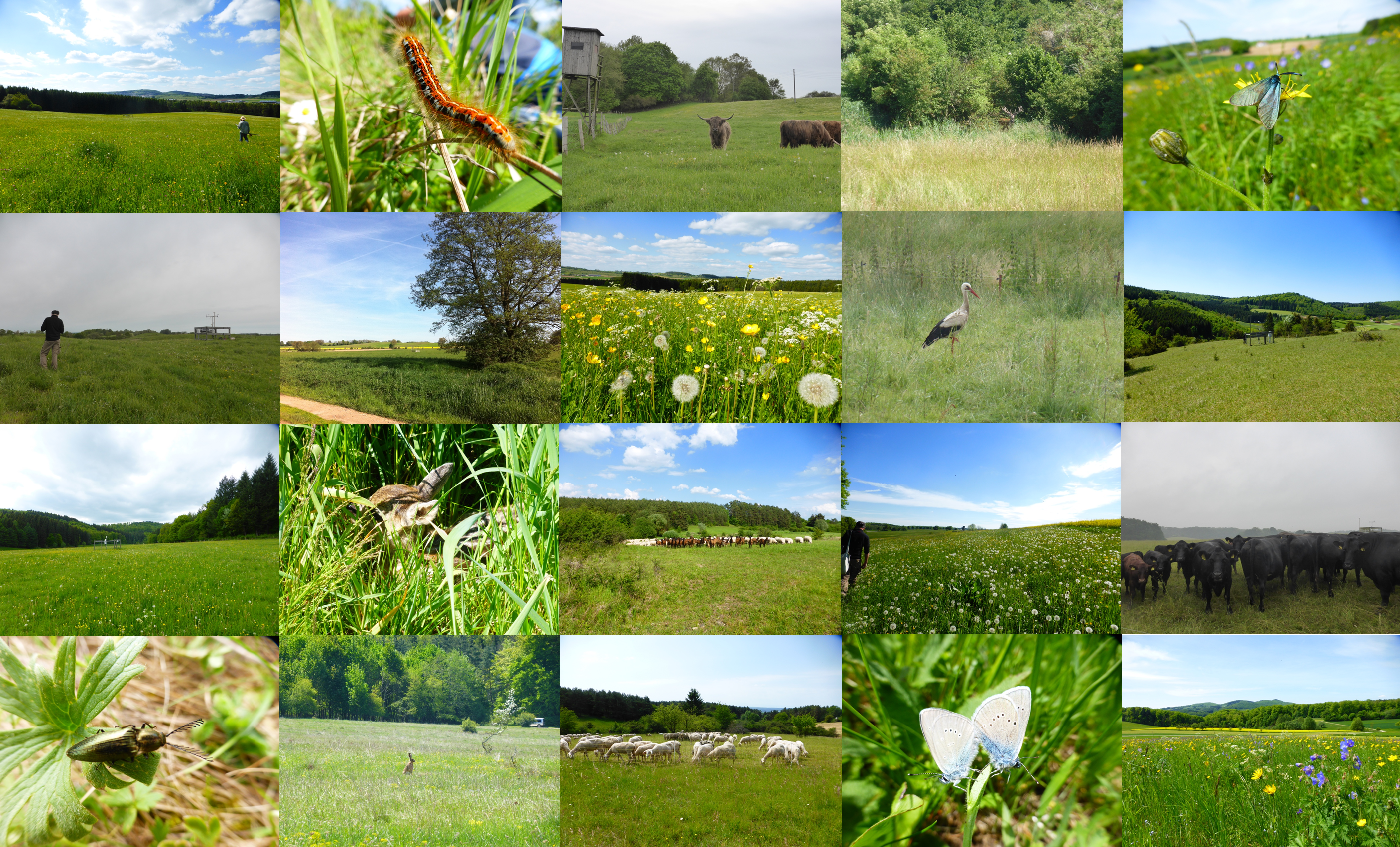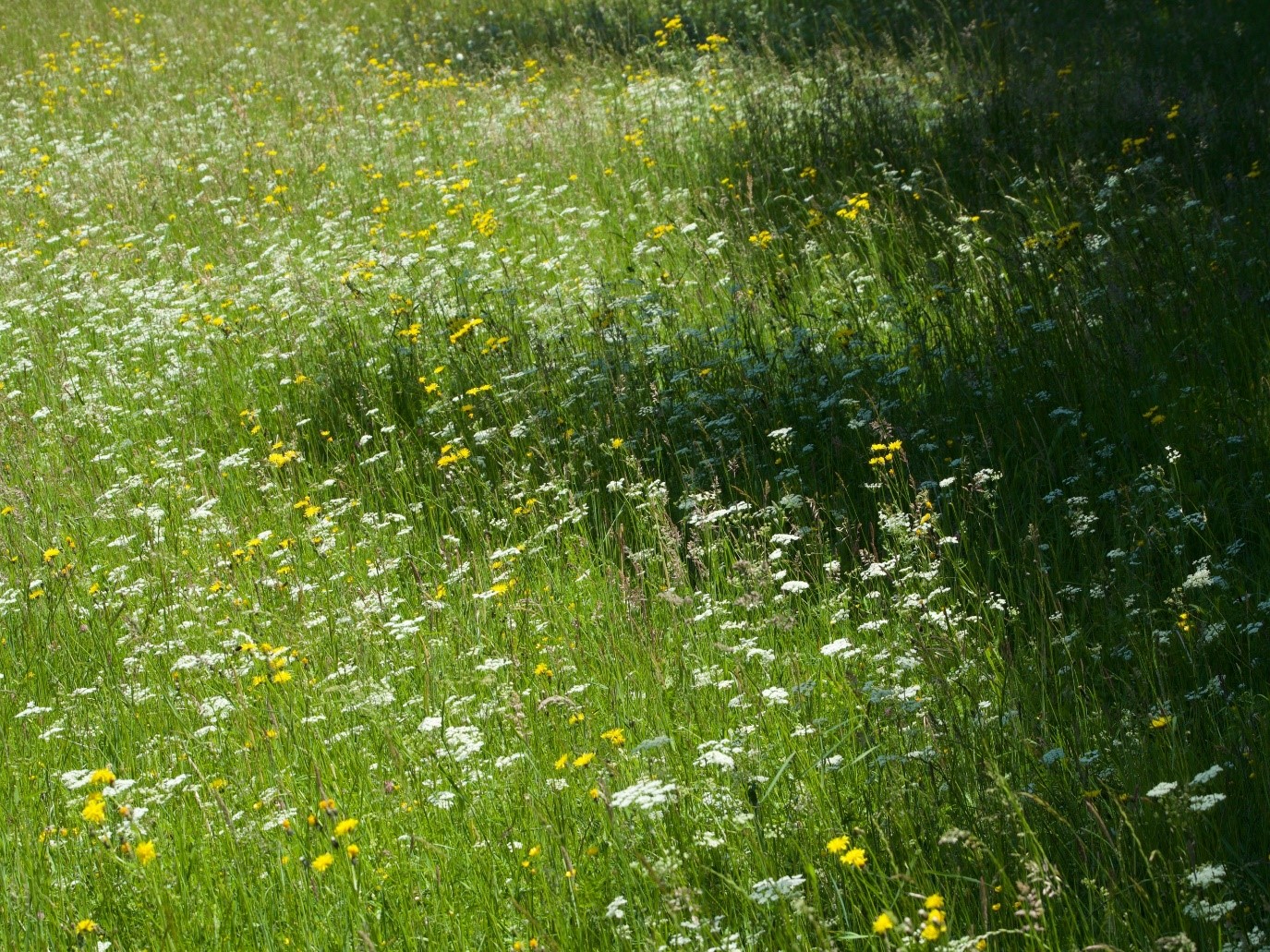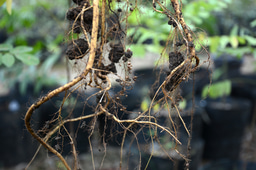How does biodiversity across agricultural landscapes meet the needs of rural people?
Published in Ecology & Evolution

It’s now widely known that species-rich meadows provide habitat for bees and other insects, and that these in turn, provide important ecosystem services such as pollination or natural pest control. But how does this diversity influence less obvious ecosystem services related to soil processes ? Or cultural ecosystem services, linked to people’s experience of nature ? And just how important is biodiversity in providing the benefits of nature that people enjoy, relative to other elements of the agricultural landscape, like land management ?
To address these questions of how biodiversity affects the local supply of different ecosystem services, we collected and gathered a huge array of data as part of the German Biodiversity Exploratories project. This open research platform allows researchers to examine relationships between biodiversity and ecosystem services across 150 agricultural grasslands that are representative of the different types in Central Europe (Fig. 1).

These plots are situated in three regions: the Schwäbische Alb of Southern Germany, the Hainich-Dün region of central Germany, and the Schorfheide-Chorin Biosphere Reserve north of Berlin. Photo credit: Gaëtane Le Provost (2017).
In this study we looked at 16 different ecosystem services – ranging from forage quality and numerous soil quality factors such as carbon storage or groundwater recharge, to cultural ecosystem services related to people’s experience of nature. The latter included the opportunity for birdwatching, the therapeutic sight of a lush meadow in bloom (Fig. 2), and the wealth of acoustic stimuli provided by a species-rich grassland through birdsong and other nature sounds. To describe biodiversity, we considered plant diversity at the scale of small study plots, but also collected data describing biodiversity across the wider agricultural environment. This was a major novelty as studies examining the relationships between biodiversity and ecosystem services usually only consider data collected within small plots (typically <1,000m²)1–3.

Using these data, we demonstrated that high plant diversity positively affects many of the ecosystem services, and that their supply relies on plant diversity across a range of scales. This was particularly true for the cultural ecosystem services and other important aboveground regulating services, such as pollination or natural enemy abundance. These were strongly affected by both plot-level plant diversity and diversity in the wider environment. What’s more, these effects were as just strong as those of agricultural management. The fact that the plant diversity of the surrounding areas influences the provision of various ecosystem services can have important implications for local decision-makers, since the policies that affect land use are usually implemented across whole farms, or even larger areas.
We were very excited about these results so submitted our manuscript to Nature Ecology & Evolution, with the hope that it will be well received. Thankfully it was, but one reviewer pointed out that our work would be stronger if the ecosystem service measures were more directly tied to human use. Great feedback that gave us new ideas !
To address this comment, we incorporated new data that described the demand for ecosystem services by the main grassland stakeholder groups in the study areas, namely: local residents, nature conservation associations, and the agriculture and tourism sectors4. To evaluate this demand, Sophie Peter, a research scientist at the Institute for Social-Ecological Research in Frankfurt am Main, conducted a large social survey in which 321 respondents were requested to distribute a maximum of 20 points across all terrestrial ecosystem services, at the final benefits level, to quantify their personal priorities. For this work, we focused on the most prioritized ecosystem services provided by grasslands: aesthetic value, biodiversity conservation, livestock production and carbon sequestration (Fig. 3). We were very enthusiastic about incorporating this interdisciplinary work as we could see immediately how it increased the societal relevance of our study !

The addition of social survey data showed that biodiversity across scales positively impacts all of the local stakeholder groups - because it promoted their prioritized ecosystem services. We can therefore see that high plant diversity offers benefits to entire rural communities. Overall, these results provide new and important insights into the links between biodiversity and ecosystem services at large spatial scales, but we encourage further larger-scale, spatially explicit, interdisciplinary and mechanistic studies if we are to truly understand the role of biodiversity in meeting the needs of the multiple stakeholder groups found in rural areas and beyond.
References
- Hooper, D. U. et al. Effects of biodiversity on ecosystem functioning: a consensus of current knowledge. Ecol. Monogr. 75, 3–35 (2005).
- Cardinale, B. J. et al. Biodiversity loss and its impact on humanity. Nature 486, 59–67 (2012).
- Jochum, M. et al. The results of biodiversity–ecosystem functioning experiments are realistic. Nat. Ecol. Evol. 4, 1–10 (2020).
- Peter, S., Le Provost, G., Mehring, M., Müller, T. & Manning, P. Cultural worldviews consistently explain bundles of ecosystem service prioritisation across rural Germany. People Nat. 4, 218–230 (2022).
Follow the Topic
-
Nature Ecology & Evolution

This journal is interested in the full spectrum of ecological and evolutionary biology, encompassing approaches at the molecular, organismal, population, community and ecosystem levels, as well as relevant parts of the social sciences.
Related Collections
With Collections, you can get published faster and increase your visibility.
Understanding species redistributions under global climate change
Publishing Model: Hybrid
Deadline: Jun 30, 2026





Please sign in or register for FREE
If you are a registered user on Research Communities by Springer Nature, please sign in